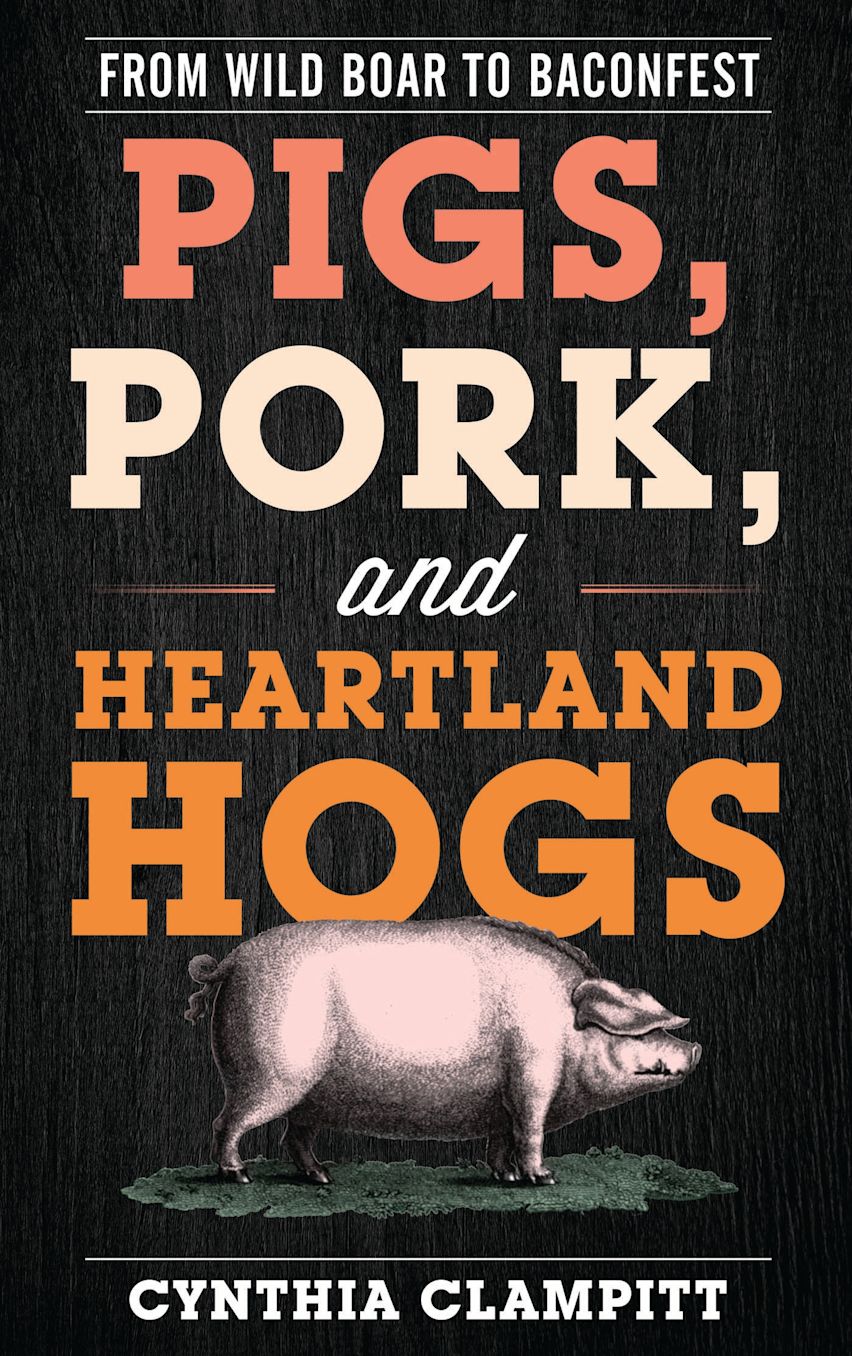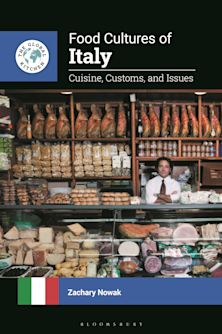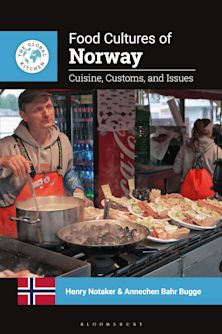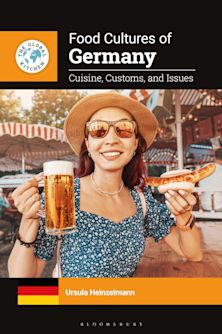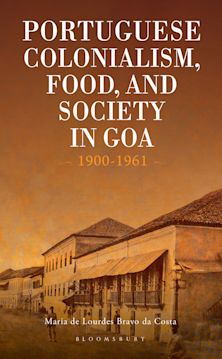- Home
- ACADEMIC
- Food
- Food History
- Pigs, Pork, and Heartland Hogs
You must sign in to add this item to your wishlist. Please sign in or create an account
Description
Among the first creatures to help humans attain the goal of having enough to eat was the pig, which provided not simply enough, but general abundance. Domesticated early and easily, herds grew at astonishing rates (only rabbits are more prolific). Then, as people spread around the globe, pigs and traditions went with them, with pigs making themselves at home wherever explorers or settlers carried them. Today, pork is the most commonly consumed meat in the world—and no one else in the world produces more pork than the American Midwest.
Pigs and pork feature prominently in many cuisines and are restricted by others. In the U.S. during the early1900s, pork began to lose its preeminence to beef, but today, we are witnessing a resurgence of interest in pork, with talented chefs creating delicacies out of every part of the pig. Still, while people enjoy “pigging out,” few know much about hog history, and fewer still know of the creatures’ impact on the world, and specifically the Midwest. From brats in Wisconsin to tenderloin in Iowa, barbecue in Kansas City to porketta in the Iron Range to goetta in Cincinnati, the Midwest is almost defined by pork. Here, tracking the history of pig as pork, Cynthia Clampitt offers a fun, interesting, and tasty look at pigs as culture, calling, and cuisine.
Table of Contents
Section I: From There to Here
Chapter 2 Early Pig: Domestication and Early Civilization
Chapter 3 Old World Pig: Pork and the Rise of Familiar Cultures
Chapter 4 Colonial Pig: Pigs in the Age of Exploration
Chapter 5 American Pig: Shaping American Culture, Agriculture, and Foodways
Chapter 6 Corn Belt/Hog Belt: How Hogs and Hominy Helped Define a Region
Section II: Pigs on our Plates
Chapter 7 Versatile Pig: The Parts and How We Use Them
Chapter 8 American Icons: Barbecue, Hot Dogs, and SPAM®
Chapter 9 Local Pig: Influences and Specialties in the Heartland
Chapter 10 Transformed Pig: Recipes for Specialties
Section III: Living with Pigs Today
Chapter 11 Popular Pig: The Rise of Pig Obsession
Chapter 12 Farm to Table Pig: People Who Raise Pigs and Create Pork
Chapter 13 Cherished Pig: Traditions That Have Changed and Some Worth Keeping
Chapter 14 Problems and Promises: Issues, Concerns, Discussions, and Hopes
Product details
| Published | 16 Oct 2018 |
|---|---|
| Format | Ebook (Epub & Mobi) |
| Edition | 1st |
| Extent | 264 |
| ISBN | 9781538110751 |
| Imprint | Rowman & Littlefield Publishers |
| Illustrations | 13 b/w photos |
| Series | Bloomsbury Studies in Food and Gastronomy |
| Publisher | Bloomsbury Publishing |
About the contributors
Reviews
-
Heartland Hogs is a captivating study on the history of the relationship between humans and pigs. From the pleasure of consuming bacon, chops and ham to controversies surrounding the hog farming industry, Cynthia Clampitt covers every angle of our longstanding alliance with the mighty swine.
Heather Lauer, Author, "Bacon: A Love Story"
-
A refreshingly thorough and fair treatment of an animal so integral to our country's long and complex food history. A go-to book for anyone interested in the history and geography of pigs, how we've used what they provide, and how they will continue to be one of the world's most important food resources.
Christopher R. Laingen, Eastern Illinois University
-
Think you know everything about pigs? Think again! In Pigs, Pork andHeartland Hogs, Cynthia Clampitt takes you on an illuminating journey in porcine history. You'll find out how the domesticated wild boars of Eurasia were destined through nature and nurture to become some of the world's most consequential animals.
Adrian Miller, The Soul Food Scholar, "Dropping Knowledge Like Hot Biscuits"®; author of Soul Food: The Surprising Story of an American Cuisine, One Plate at a Time; 2014 James Beard Foundation Book Award Winner for Reference and Scholarship
-
Clampitt, an independent scholar, presents a multidisciplinary homage to the pig, the first animal to be domesticated as a source of food and the most commonly eaten meat across the globe . . . Clampitt combines a review of secondary sources, archival research, field visits, and interviews to produce a highly readable, engaging consideration of the history and culture of pork. Extensive endnotes, a bibliography, and source list will satisfy the scholar, while the journalistic methods, photos, and engaging storytelling will appeal to the general reader. Clampitt emphasizes in the introduction that her aim "is not to promote the consumption of pork, but rather to underscore the impact of food and agriculture on world events.
Choice Reviews











